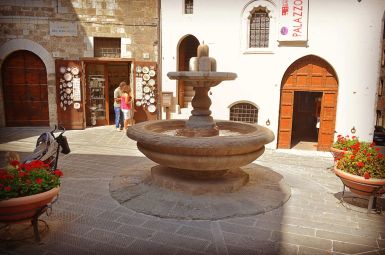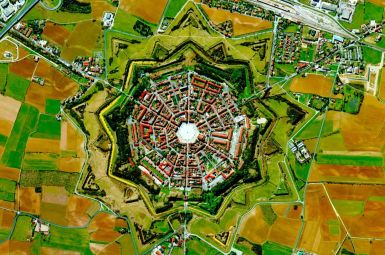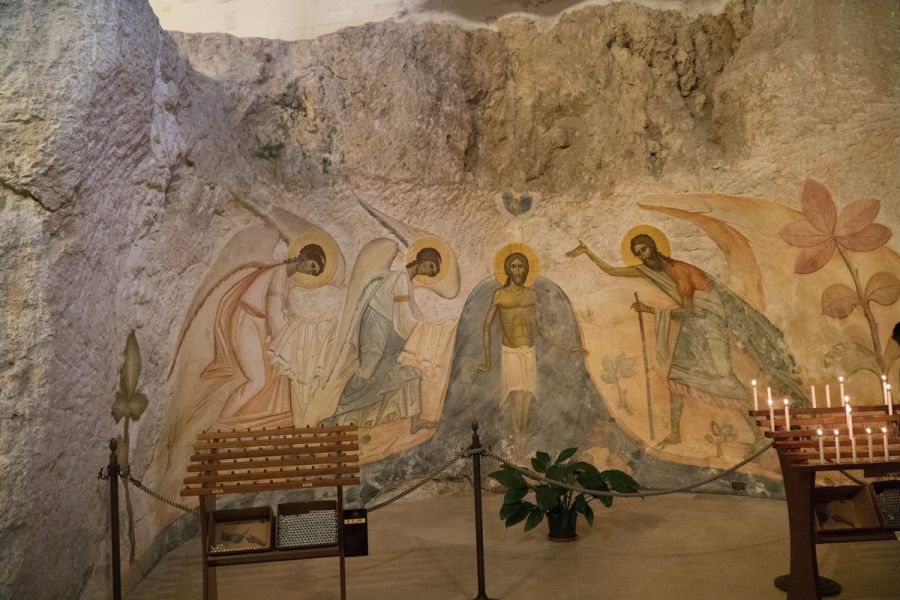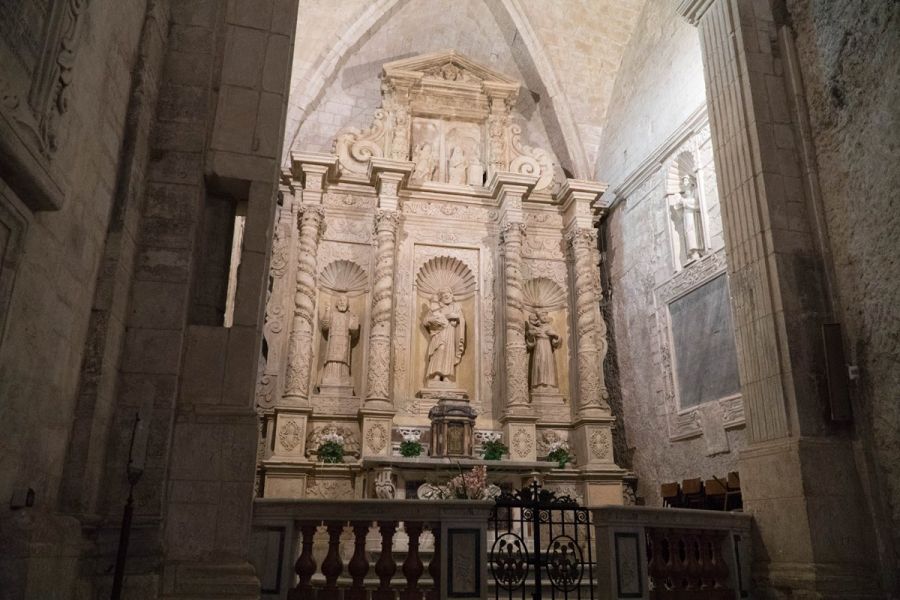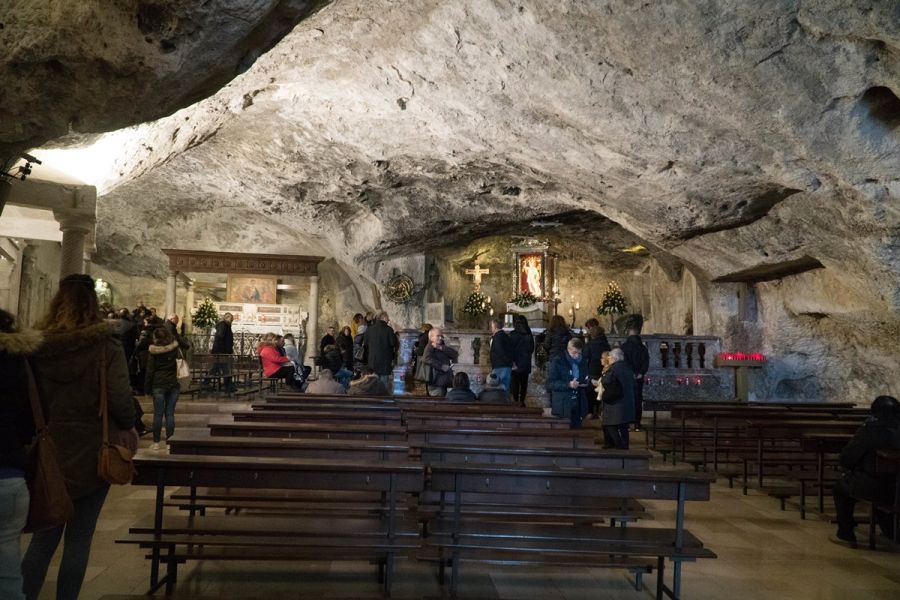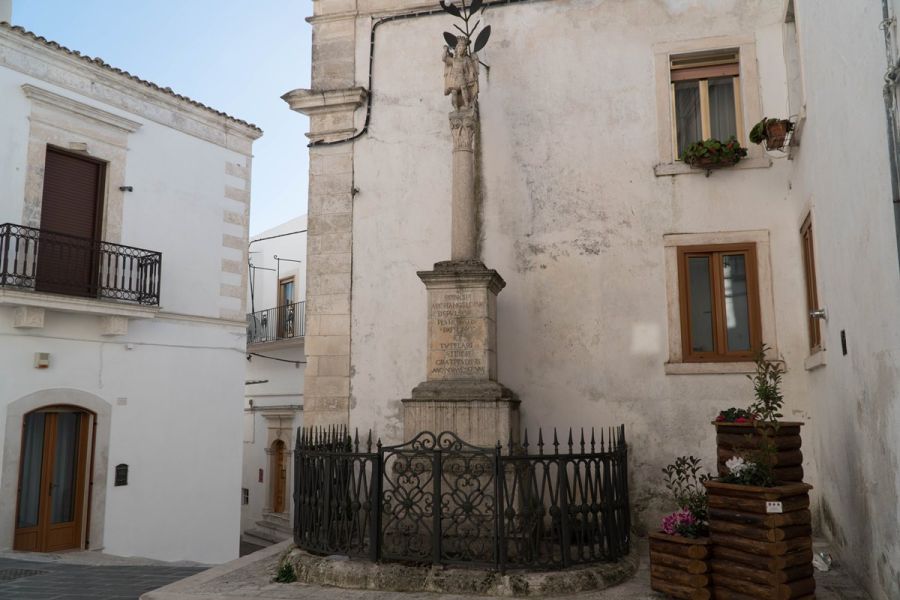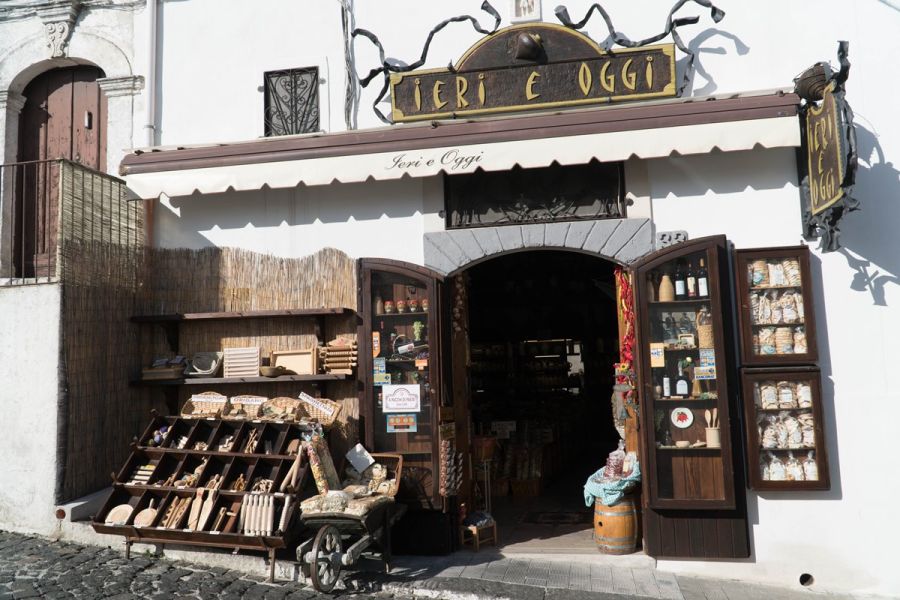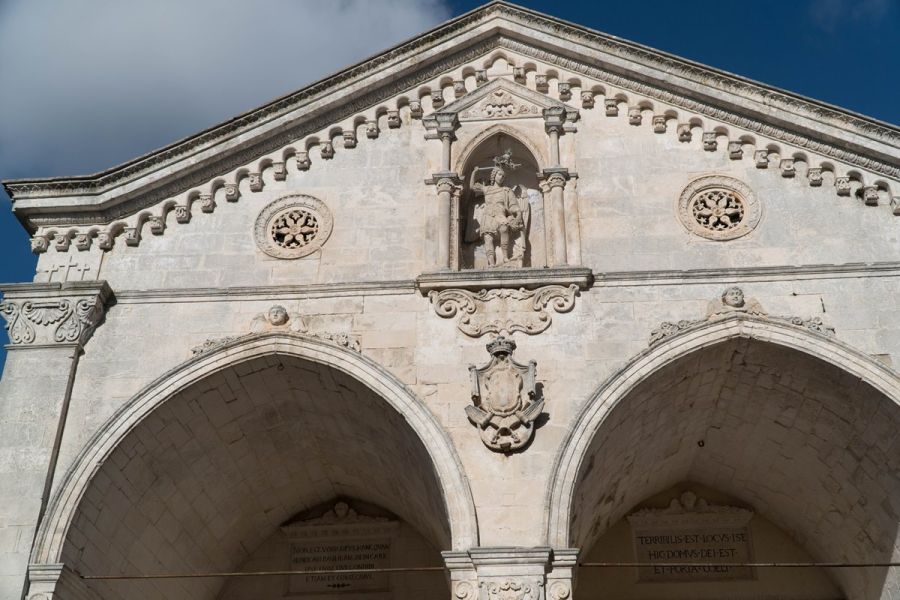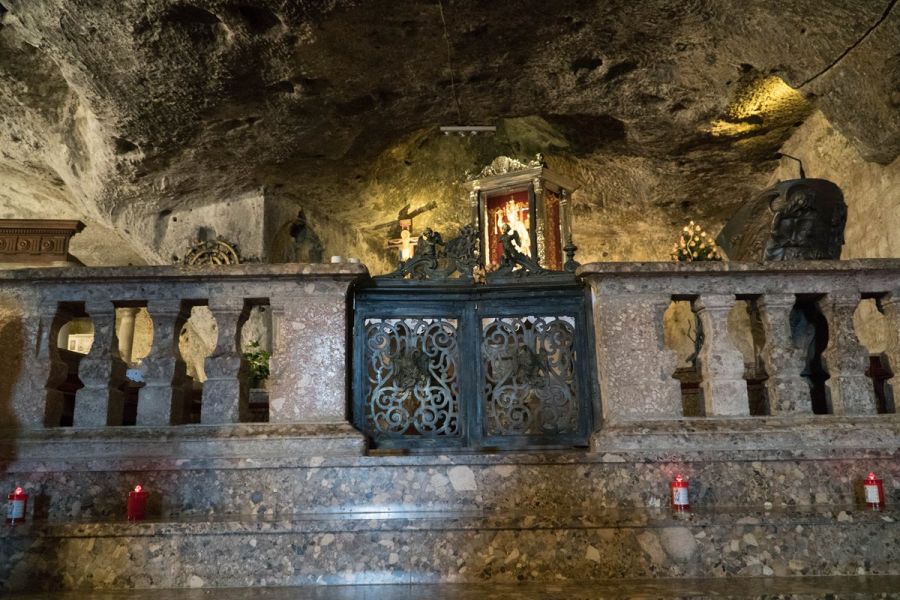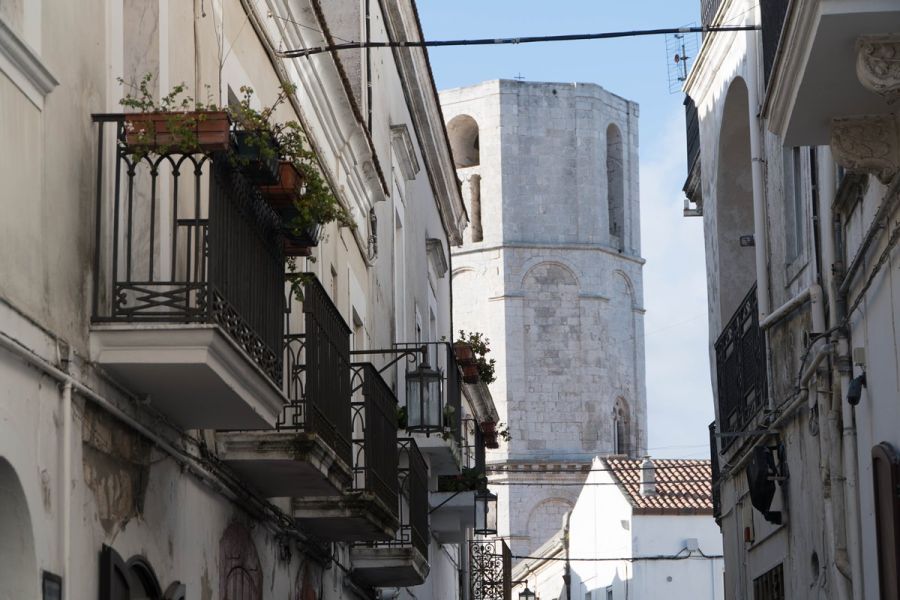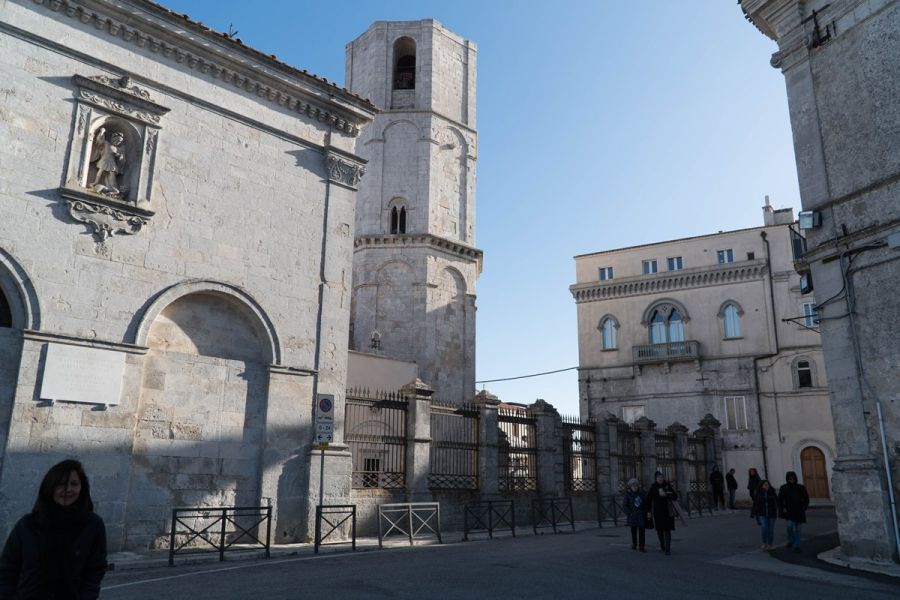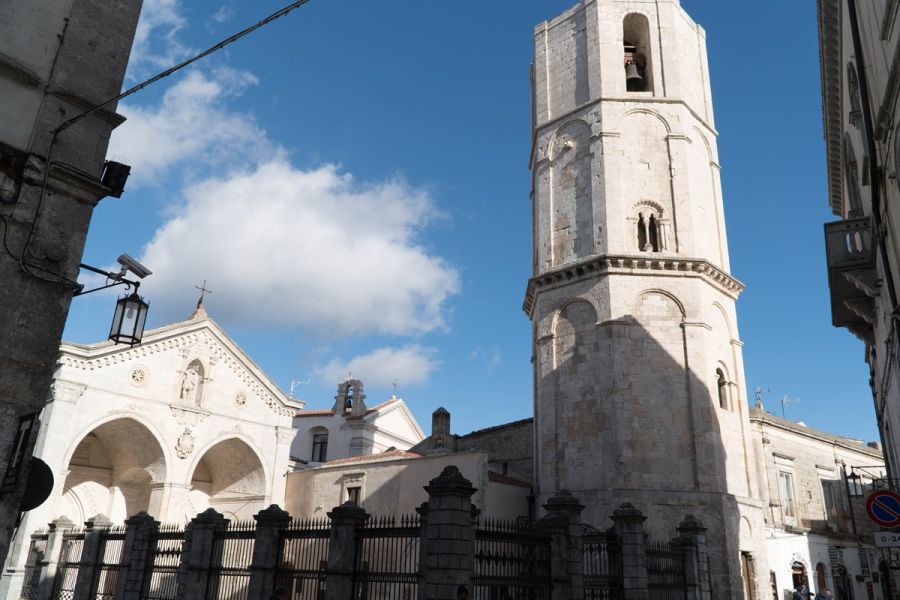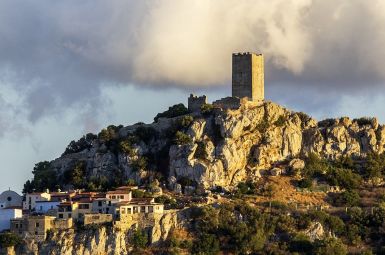
Monte Sant’Angelo
Il Borgo di Monte Sant’Angelo

Il Borgo d’Italia
tutto da scoprire ed esplorare
Monumenti
Storia
Le origini di Monte Sant’Angelo si perdono tra miti e leggende intrise di cultura medievale e arcaica spiritualità.
Siamo nel 490 d.C, nella zona di Sant’Angelo un ricco pastore smarrì il suo toro e dopo giorni di estenuanti ricerche lo ritrovò inginocchiato in una stretta spelonca. Era così affezionato all’animale che, nonostante fosse evidente che non sarebbe mai riuscito ad entrare nell’insenatura, provò comunque in tutti i modi a salvarlo. Tutti i suoi tentativi furono vani e l’uomo disperato decise di scagliare contro il toro una freccia che inspiegabilmente tornò indietro. Il pastore non sapendo più cosa fare andò a raccontare l’accaduto al vescovo di Siponto che ordinò alla popolazione tre giorni di penitenza. Il terzo giorno, l’8 maggio, San Michele Arcangelo apparve al vescovo e gli chiese di consacrare la grotta alla spiritualità cristiana, in suo nome. Negli anni successivi l’arcangelo si manifestò al vescovo in altre due occasioni, nel 492 e nel 493.
Inizia così il percorso per la fondazione di un centro urbano, nato ufficialmente nell’anno mille, nel pieno dell’età di mezzo.
La leggenda di San Michele ha portato a questo borgo una fama che dura ancora oggi e che nei secoli lo ha reso meta di intensi pellegrinaggi, lungo quella che è conosciuta come la via Francigena. Questo cammino partiva dal santuario di Mont Saint Michel in Normandia e giungeva fino all’estremo lembo della terra: il santuario di Santa Maria di Leuca.
Nonostante l’aurea di sacralità che circonda questo centro, Monte Sant’Angelo non è stato risparmiato dalle incursioni dei saraceni e da un’epidemia di peste che ha decimato la popolazione nel 1656. In quest’occasione si racconta che l’Arcangelo Michele si sia manifestato nuovamente al vescovo dispensando grazie e guarigioni.
A partire dal 1700 Monte Sant’Angelo è stata ampliata grazie all’espansione dell’edilizia, che ne ha modificato l’antico assetto urbano facendo sorgere nuovi quartieri anche al di fuori delle mura storiche.
Monte Sant’Angelo non è solo un centro di spiritualità cristiana, nel 2011 questo borgo è diventato patrimonio mondiale dell’Unesco e nel 2014 la National Geographic Society ha inserito la grotta di San Michele tra le dieci più belle al mondo.
Grotta di San Michele Arcangelo
Fin dal V secolo, cioè da quando si racconta di alcune apparizioni dell’arcangelo Michele, Monte Sant’Angelo è diventata meta prescelta da molti pellegrini che giungevano da ogni dove. Spesso arrivavano da oltralpe, partivano dal monastero di Mont Saint Michel seguendo il cammino della via Francigena. I crociati in viaggio verso la Terra Santa ritenevano questo luogo una tappa obbligata per purificarsi prima della loro impresa, ma da questo santuario sono passati anche papi e santi, tra cui San Francesco d’Assisi.
La tradizione cristiana racconta che i cardinali che si recano in visita presso la grotta di San Michele siano destinati a diventare papi: così è stato anche per il cardinale Karol Woijtila che passò da qui nel 1974 ma anche per altri importanti nomi che hanno varcato il soglio papale.
La grotta di San Michele non ha più l’aspetto rustico che incontravano i pellegrini medievali, che per poter venerare il santo erano costretti ad affidarsi a scalini poco sicuri e scavati nella roccia. Chi si reca in visita presso il santuario si trova davanti una piccola chiesetta perfettamente incastonata con la grotta ipogea. Dopo aver sceso ottantanove gradini ci si trova davanti all’ atrio inferiore e in seguito alle Porte di Bronzo realizzate a Costantinopoli e donate alla chiesa da un mercante di Amalfi. Sulle ante delle porte sono incise scene che raffigurano la vita di alcuni santi. Queste porte custodiscono una chiesetta semplice ed austera realizzata in linea con lo stile gotico. Dal lato destro della chiesa si accede alla grotta di San Michele: una cripta scavata nella roccia ed illuminata da alcune candele e dalla luce del giorno che filtra da una stretta imboccatura. Gli unici decori di questo luogo sacro sono gli altari: quello barocco dedicato al SS. Sacramento e l’altare maggiore su cui poggia la statua di San Michele realizzata in marmo bianco di Carrara nel 1507 da Andrea Cantucci detto Sansovino.
Il castello di Monte Sant’Angelo
Monte Sant’Angelo sin dal IX secolo era custodito all’interno delle mura che partivano dal castello e abbracciavano tutto il centro storico. Risale proprio all’inizio di questo secolo la costruzione del castrum ad opera dei longobardi, molto devoti al culto di San Michele e quindi presenza importante nel borgo pugliese.
Il castello di Monte Sant’Angelo ha attraversato dieci secoli di storia, ospitando principi e principesse, normanni, svevi e angioini; modificandosi per i loro bisogni e in base alla moda del tempo.
L’ultima testimonianza dell’antico nucleo originale che è giunto fino a noi è una torre pentagonale conosciuta come “La torre dei Giganti”, secondo le fonti storiche risalirebbe all’epoca normanna e sarebbe stata costruita sui resti di un altro impianto di difesa edificato dai longobardi. I rimaneggiamenti più importanti sono stati apportati al castello durante gli anni dell’impero di Federico II di Svevia e durante la dominazione aragonese che diedero al maniero l’assetto stilistico che ancora oggi possiamo ammirare.
Dopo essere appartenuto alla famiglia Grimaldi di Gerage, nel 1798 il castello è diventato di demanio regio, fino alla disfatta di Napoleone Bonaparte. Con il ritorno dei Borboni il maniero venne consegnato alla volontà del cardinale Ruffo che lo donò ai suoi eredi, i quali pensarono bene di affidarlo nelle mani di pastori ed agricoltori che lo demolirono in parte e lo adattarono a ricovero per animali, danneggiandolo irrimediabilmente.
Solo nel 1907 il comune di Monte Sant’Angelo riuscì a svincolare il castello e lo sottopose ad un importante intervento di restauro grazie al quale è stato possibile aprirlo ai visitatori.
Il museo di arti e tradizioni popolari del Gargano.
L’antico convento di San Francesco a Monte Sant’Angelo, messa da parte la sua originaria funzione spirituale, è diventato sede di uno dei più importanti musei civici di arti e tradizioni popolari della Puglia.
Questo museo custodisce testimonianze concrete di una civiltà a noi vicina ma di cui sappiamo veramente poco. Attraverso un vasto archivio fotografico, utensili d’epoca ma anche ricostruzioni storiche, ci si può calare nei panni di uomini e donne dei primi del novecento, alle prese con problemi che non rientrano più neanche nel nostro immaginario collettivo. Questo luogo racconta usi e costumi da cui partono le nostre radici che ci portano all’interno di curiose vicende e storie d’altri tempi.
Gli antichi mestieri attirano la curiosità di giovani e meno giovani che ammirano il telaio con il quale si producevano i tessuti ma anche utensili per la coltivazione di grano, la produzione di vino e il lavoro del falegname.
Questo museo vince sicuramente la sfida della cultura, facendo valere l’esempio di una didattica antica e allo stesso tempo coinvolgente ed innovativa che lo porta a registrare un alto numero di presenze, soprattutto tra le giovani generazioni.
Curiosità
Tomba di Rotari?
Monte Sant’Angelo custodisce tra le sue mura anche una leggenda legata al re longobardo Rotari che porta nel borgo garganico numerosi visitatori da tutta Italia.
A pochi passi dalla Grotta Sacra di San Michele Arcangelo, si trova il complesso monumentale di San Pietro che secondo fonti storiche sarebbe addirittura precedente alla costruzione del santuario.
Questo complesso è composto dai pochi resti della chiesa di San Pietro e da un edificio seminascosto che probabilmente è un battistero: il battistero di San Giovanni.
All’interno di questo edificio si trova un’epigrafe che ha fatto pensare per lungo tempo che in quel luogo fosse sepolto il sovrano longobardo, che in vita aveva manifestato la volontà di essere sepolto a Monte Sant’Angelo. Nonostante questo è più probabile che Rotari riposi ancora oggi a Pavia, dov’è morto, e che la leggenda sia solo frutto di una sbagliata interpretazione del termine tumba riportato nell’incisione interna.
Nonostante questo, il complesso di San Pietro è sicuramente molto suggestivo e merita una visita anche senza la presenza del re longobardo. Dell’antica chiesa resta una navata senza tetto, un abside ed il battistero realizzato da mani abili e sapienti. Sul portale, sui capitelli e sulle cornici sono riportate scene bibliche del vecchio e del nuovo testamento e figure antropomorfe che probabilmente sono allegoria di vizi e virtù delle umane genti.
Ricette Tipiche
Le ostie piene
Le migliori invenzioni sono frutto di errori umani e di pure coincidenze. Gli abitanti di Monte Sant’Angelo se lo ricordano bene ogni volta che vanno al forno, in pasticceria o anche solo quando si diffonde per le strade l’odore di mandorle caramellate, che li fa inevitabilmente pensare alle ostie chene, cioè le ostie piene. In questo borgo questo è il dolce più dolce che ci sia, realizzato con mandorle tostate e caramellate con miele e zucchero, racchiuse tra due ostie di pasta crema. Camminare per Monte Sant’Angelo significa anche imbattersi in numerose varianti di questo dolciume che in tanti espongono con un pizzico di orgoglio locale.
La fortuna delle ostie piene è un puro frutto del caso: la storia racconta che nel convento della Trinità vivevano le Monache Clarisse che erano solite preparare le mandorle caramellate. Un giorno per errore caddero sopra alle mandorle alcune ostie e nonostante gli sforzi non riuscirono a staccare le une dalle altre, nemmeno aggiungendo un secondo ovale di ostia. Questo è stato sicuramente uno degli errori meglio riusciti di tutti i tempi.
